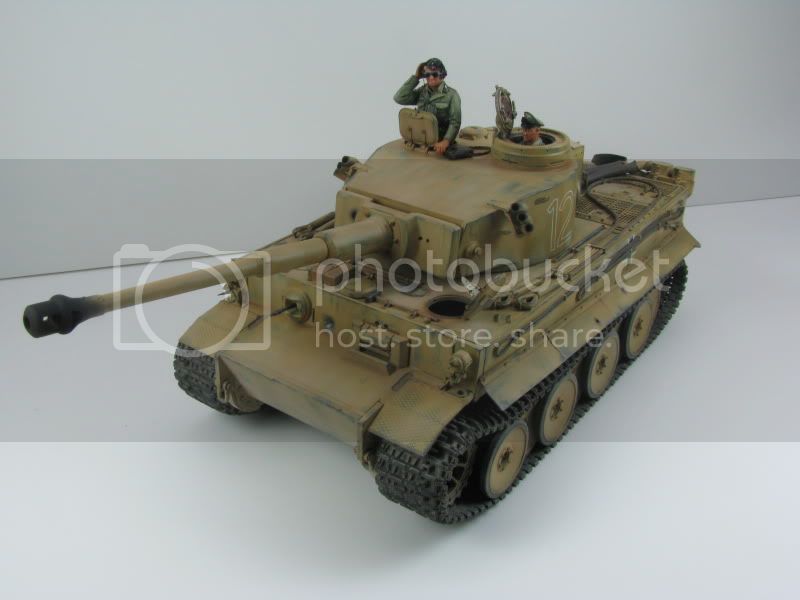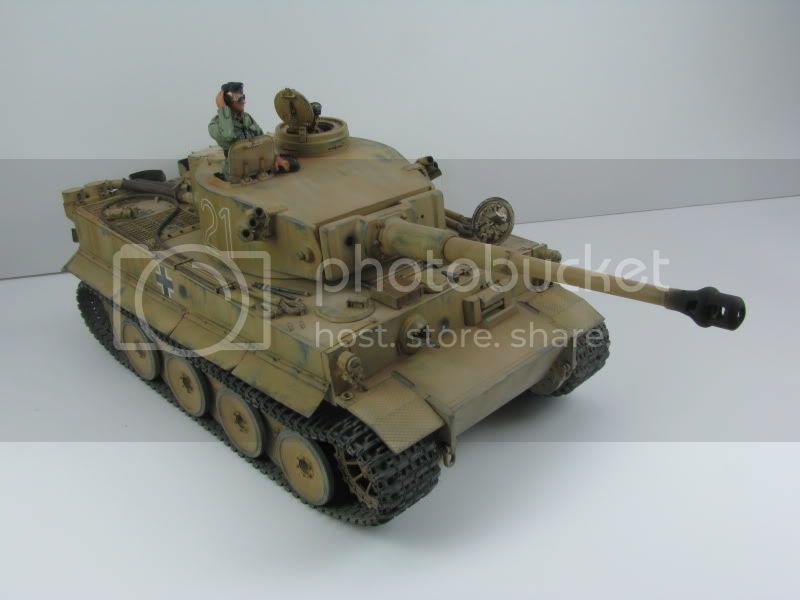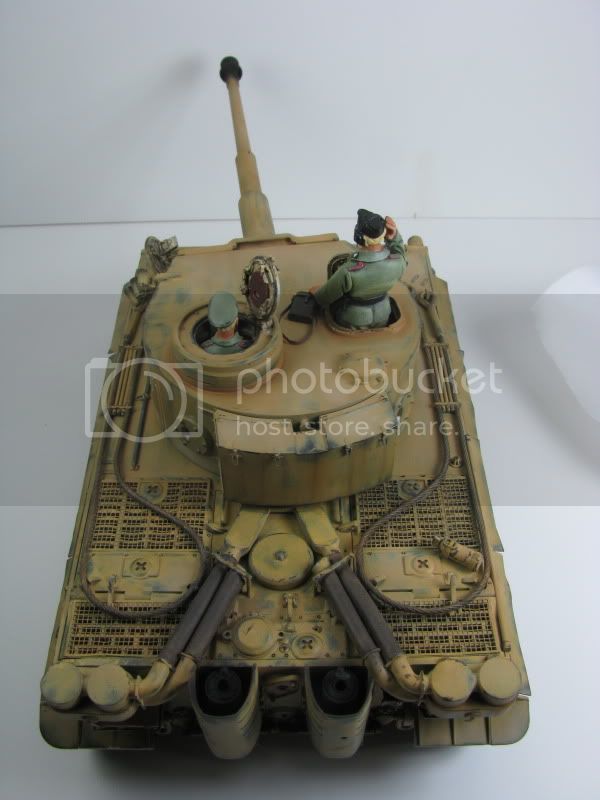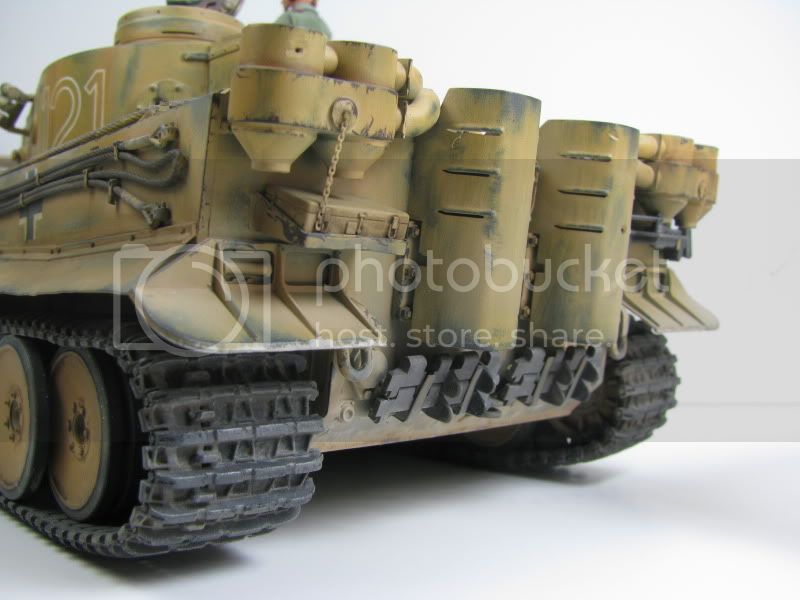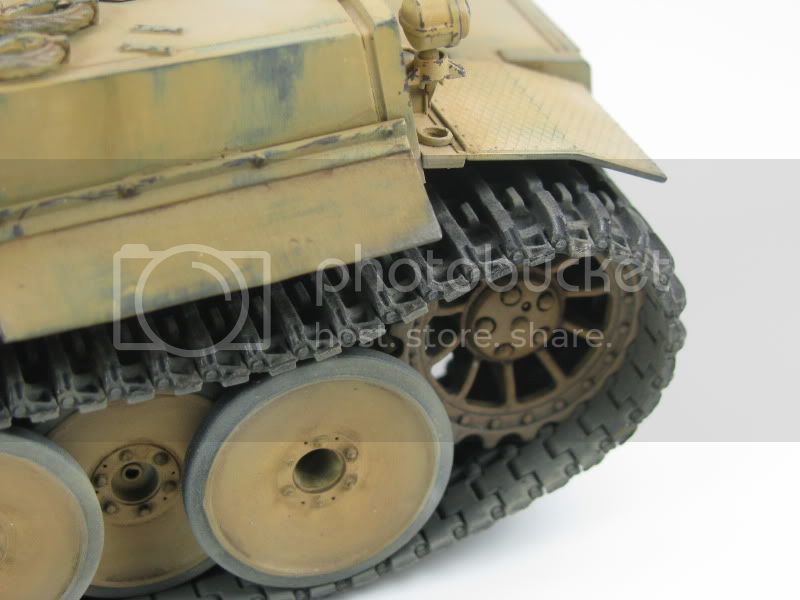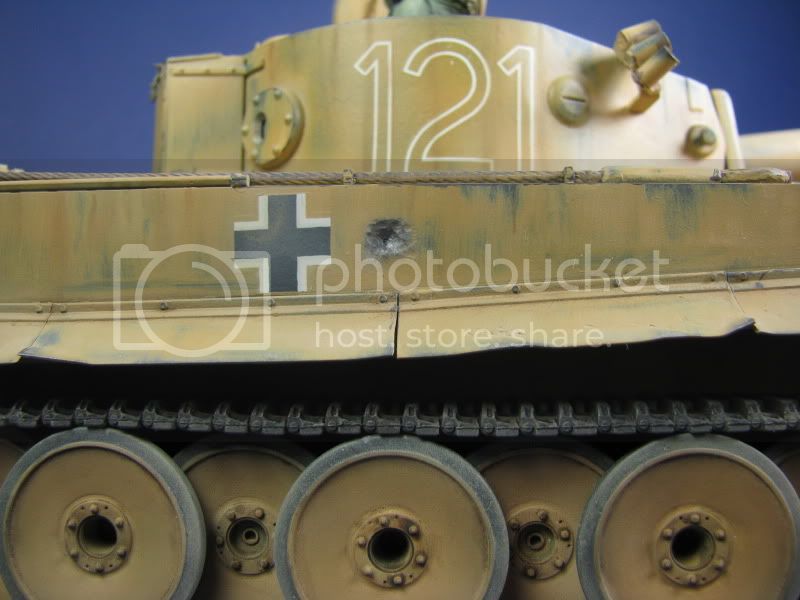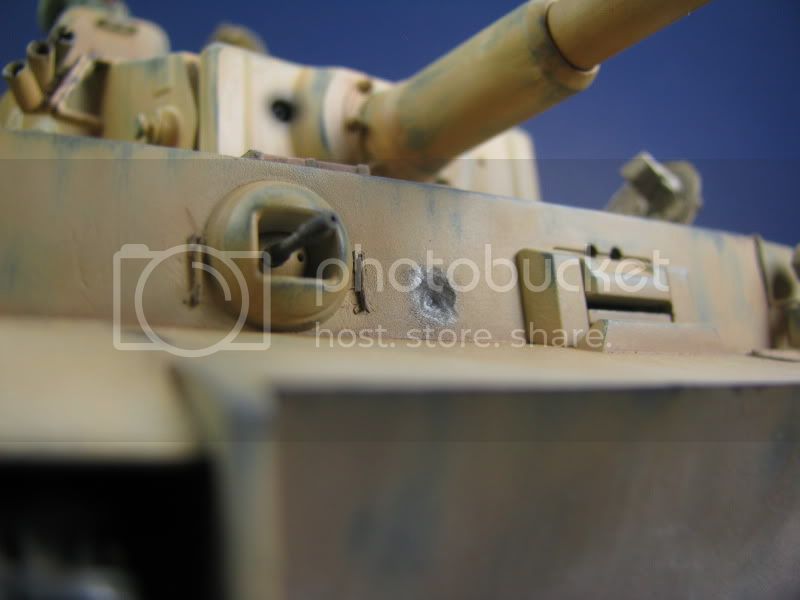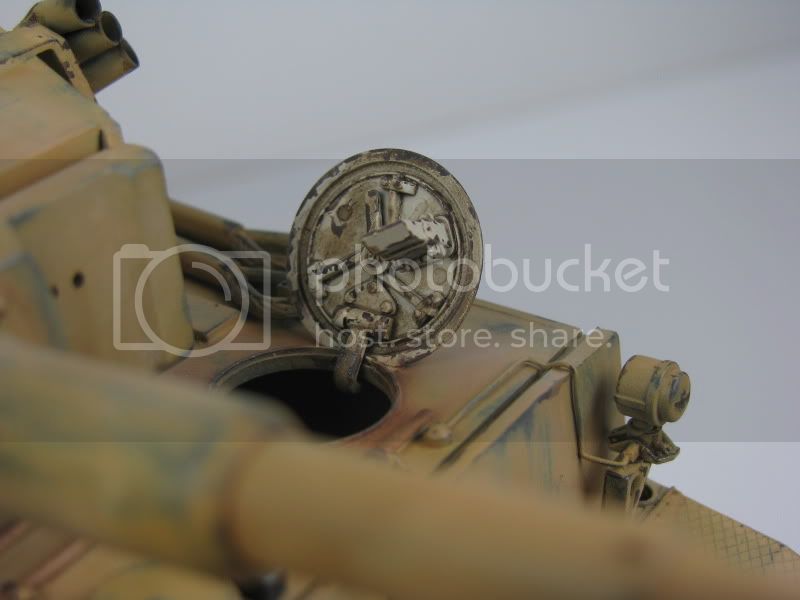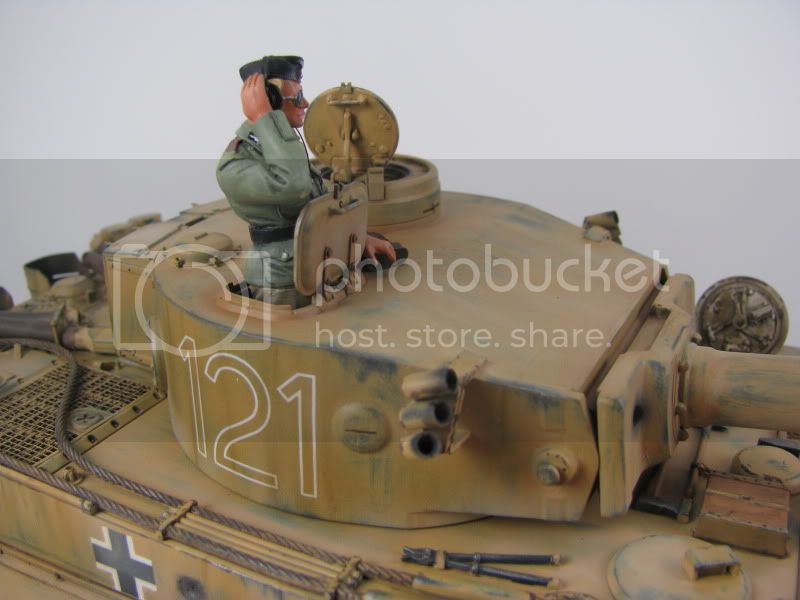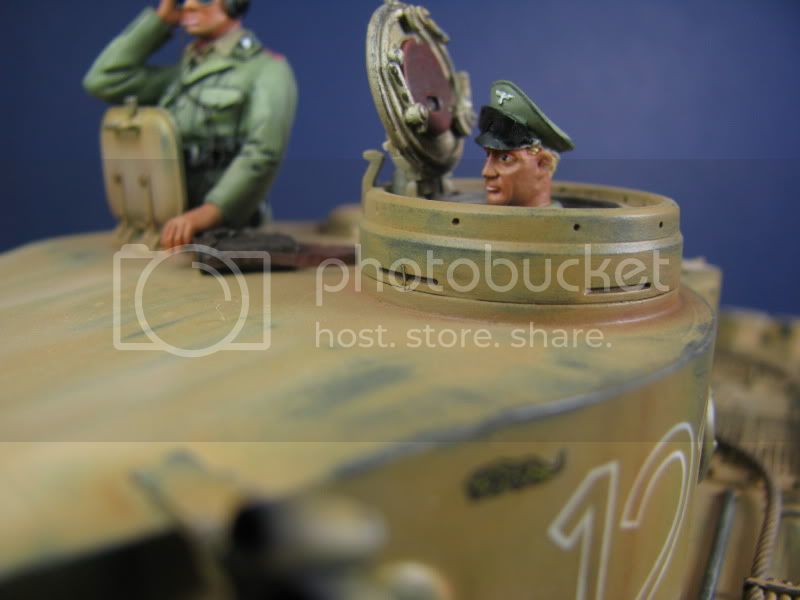Mirko;
NICE TIGER!
I liked your shell impact... I think you are pretty "good" with the silvered gouge. It looks pretty convincely like a non-penetrating solid shot strike, to me! I would maybe add on a slight blackening of the paint right around the edge of that gouge, and maybe darken the silver just a little to reflect it's newly-burnished steel. Otherwise than that, looks right, IMO. Maybe some Brit expressing his outrage with a 2lb gun as the big steel kitty lumbered on past!

About AP impacts... Consider that 60mm sidewall armor was still very heavy-duty and mostly impervious to all but close-in direct impacts from most Allied guns in Africa. In most cases, the solid shot of the day would typically either deflect off (if impacting at some angle), or would gouge in and then fragment, if a direct-on strike. These impacts would produce a bare-metal gouge (silvery, but maybe darker to represent newly-burnished steel...) with a small melt birm thrown up by displaced melted armor and shot metal. There would be a small amount of super-heating damage to immediate-area paint (so a tiny amount of burning around the crater). The angled impact would "trough" the gouge, whereas the perpendicular strike would create a more-regular dimple. A larger-calibre shot could both gouge and dent-in / deform the plate.
Any non-penetrating explosive shell would of course leave less gouge and more blackening from the burst burn.
German tanks which have been holed by AP shot often show the penetrations to look like nearly-lipless holes punched thru the plate. Sometimes an irregular hole, and sometimes with one or more cracks radiating out. Such strikes often punched thru due to armor-plate brittleness and failure, and spalled-off a chunk inside the hull. Of course, if THAT had happened to your Tiger....
Nice Tiger! Someday I'll build one, too (Tiger, that is. But will it be "nice"? That is a different question!

) !
Bob

